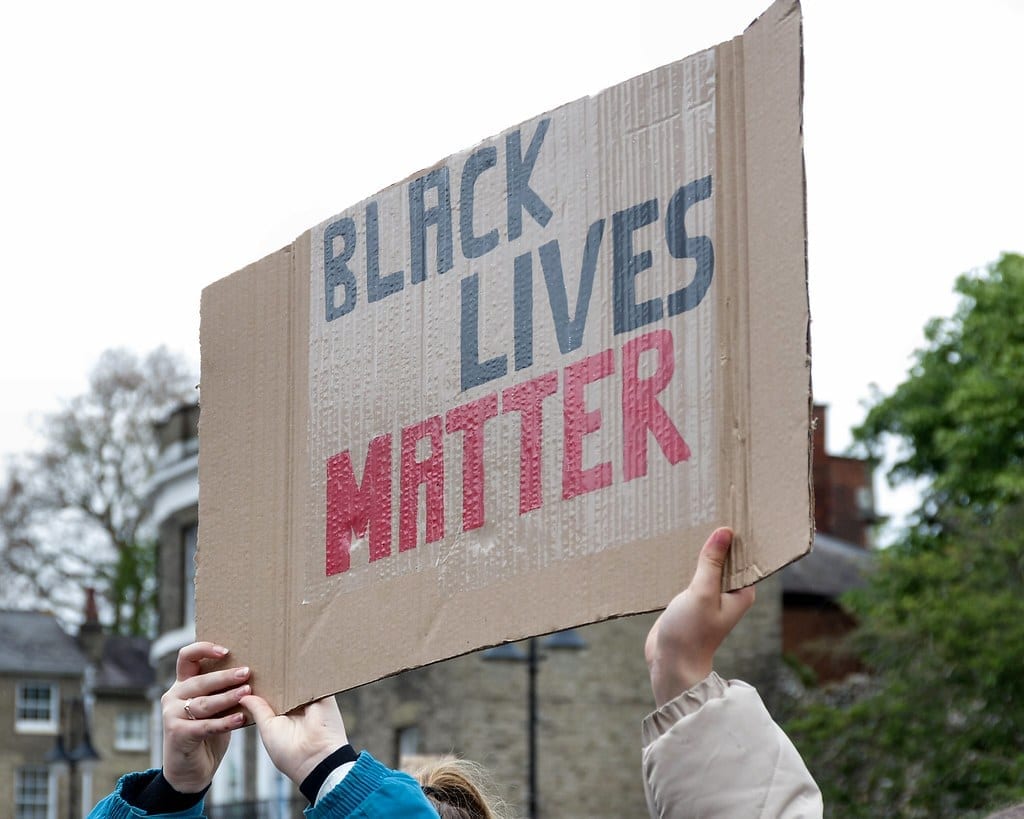Distinguished journalists discuss ethical reporting in newsroom and classroom
Distinguished achievers in the field of Journalism discuss ethical reporting in the newsroom and in the classroom.

Protester holding up a Black Lives Matter sign.
The current Civil Rights Movement in America has been the focus of mainstream media for months now. A lot of coverage raises the question about ethical and fair reporting on protests.
The University of Tennessee’s College of Communication and Information’s Diversity and Inclusion Week hosted a panel that focused on how the media covers matters of civil rights, such as protests. The panel also included discussion about ethical reporting and fairness in the newsroom and classroom, as well as tips for students still preparing to become journalists.
The panelists for the event are all knowledgeable and accomplished in the field of Journalism. Mike Martinez is a Journalism and Electronic Media lecturer at the University of Tennessee. Bonnie Winston is a managing editor for the Richmond Free Press. And finally, Danielle Kilgo is a Journalism professor at the Hubbard School of Journalism for the University of Minnesota. The moderator, Kesha Williams, is a freelance photojournalist.
The session focused on how the media covers matters of civil rights, such as protests. It also covered tips for students still preparing in the classroom.
In the Newsroom
The panelists first began with how the media typically covers protests. They mentioned that the media tends to put the majority of coverage on the protests themselves. They emphasized that the context for the protests and the aftermath is usually omitted. Martinez specifically identified the lack of community coverage.
“This type of coverage needs to go into the communities long before we get into the protest level and I’m not seeing a lot of that,” Martinez said.
Martinez also claims that episodic reporting is just the first step when it should really be the second step. Journalists need to follow up with communities and see what type of progress or regress has been made.
Winston also emphasized the importance of context for journalists.
“You got to understand the context of why these things are happening in your community. They didn’t just bring up out of nowhere,” Winston said.
“I think all journalists need to understand where these protests are coming from and the background and that’s just important.”
The panelists also gave some constructive criticism about what they have observed in the media regarding recent racial protests.
Once again the panelists discussed the lack of community coverage and reporting on the context of these protests. They also, Bonnie Winston in particular, discussed the importance of listening to the stories of the protesters. She mentioned, as an example, the protests of confederate statues. She claimed that reporters often neglected to dive into the story, making an entire day of protests fit into one article. Winston claimed the protests deserve more than episodic coverage.
Panelists also touched on photojournalism. They discussed the importance of telling a story through photography. Martinex also emphasized the importance of stepping out from behind the camera.
“Don’t forget the journalism part of it,” Martinez said. “You step from behind the camera and you ask questions, you talk to people.”
They also discussed the imperative need for diverse voices in the newsroom. Kilgo even pointed out the diverse newsrooms have more perspective and often bridges communication between communities.
“It helps bridge a community in a newsroom that is more open and more capable of having the conversations that we don’t like to have,” Kilgo said.
In the Classroom
The panel then switched the discussion to how students in the classroom can learn to correct the issues we see with unfair reporting now. They also added helpful ways for professors to help students be fair and ethical reporters. Panelists declared that reporting on issues of civil rights protests is dangerous, but it must be done. They emphasized caution and a willingness to tell someone’s story.
“Bring issues to the forefront for the public consumption,” Martinez said. “Suggest solutions. Try to come up with ideas that may be a way forward.”
They also encouraged using diverse sources and not being afraid to talk about an issue that is uncomfortable.
For information about Diversity and Inclusion Week visit CCI’s website.
Edited by Madalyn Torres
Featured Photo Courtesy of Creative Commons

